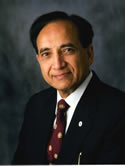Prospective functional voice assessment in patients undergoing thyroid surgery Journal Article
| Authors: | Stojadinovic, A.; Shaha, A. R.; Orlikoff, R. F.; Nissan, A.; Kornak, M. F.; Singh, B.; Boyle, J. O.; Shah, J. P.; Brennan, M. F.; Kraus, D. H. |
| Article Title: | Prospective functional voice assessment in patients undergoing thyroid surgery |
| Abstract: | Objective: To analyze voice function before and after thyroidectomy for patients with normal preoperative voice using a standardized multidimensional voice assessment protocol. Summary Background Data: The natural history of post-thyroidectomy voice disturbances for patients with preserved laryngeal nerve function has not been systematically studied and characterized with the intent of using the data for postoperative voice rehabilitation. Methods: During a prospective single-arm study, patients with normal voice underwent functional voice testing using a standardized voice grading scale and a battery of acoustic, aerodynamic, glottographic, and videostroboscopic tests before, 1 week after, and 3 months after thyroidectomy. Differences in observed sample means were evaluated using analysis of covariance or t test; categorical data was analyzed using the Fisher exact or chi-square test. Results: Fifty-four patients were enrolled; 50 and 46 were evaluable at 1 week and 3 months, respectively. No patient developed recurrent laryngeal nerve injury; one had superior laryngeal nerve injury. Fifteen (30%) patients reported early subjective voice change and seven (14%) reported late (3-month) subjective voice change. Forty-two (84%) patients had significant objective change in at least one voice parameter. Six (12%) had significant alterations in more than three voice measures, of which four (67%) were symptomatic, whereas 25% with three or fewer objective changes had symptoms. Patients with persistent voice change at 3 months had an increased likelihood of multiple (more than three) early objective changes (43% vs. 7%). Early maximum phonational frequency range and vocal jitter changes from baseline were significantly associated with voice symptoms at 3 months. Conclusions: Early vocal symptoms are common following thyroidectomy and persist in 14% of patients. Multiple (more than three) objective voice changes correlate with early and late postoperative symptoms. Alterations in maximum phonational frequency range and vocal jitter predict late perceived vocal changes. Factors other than laryngeal nerve injury appear to alter postthyroidectomy voice. The variability of patient symptoms underscores the importance of understanding the physiology of dysphonia. |
| Keywords: | adult; controlled study; aged; middle aged; major clinical study; postoperative period; vocal cord; follow-up studies; preoperative evaluation; prospective study; sensitivity and specificity; prospective studies; risk assessment; severity of illness index; probability; scoring system; voice; vocal cords; thyroidectomy; thyroid neoplasms; speech production measurement; analysis of variance; nerve function; voice disorders; laryngoscopy; phonation; thyroid surgery; voice quality; single-blind method; dysphonia; laryngeal nerve; recurrent laryngeal nerve palsy; superior laryngeal nerve; speech rehabilitation; humans; human; male; female; priority journal; article; laryngography |
| Journal Title: | Annals of Surgery |
| Volume: | 236 |
| Issue: | 6 |
| ISSN: | 0003-4932 |
| Publisher: | Lippincott Williams & Wilkins |
| Date Published: | 2002-12-01 |
| Start Page: | 823 |
| End Page: | 832 |
| Language: | English |
| DOI: | 10.1097/00000658-200212000-00015 |
| PUBMED: | 12454521 |
| PROVIDER: | scopus |
| PMCID: | PMC1422649 |
| DOI/URL: | |
| Notes: | Export Date: 14 November 2014 -- Source: Scopus |
Altmetric
Citation Impact
BMJ Impact Analytics
Related MSK Work










